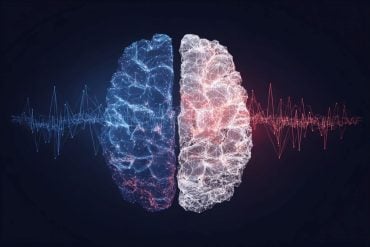Summary: Researchers have isolated the electrical activity of individual neurons in the vagus nerve responsible for regulating cardiovascular function in humans. By identifying neurons that fire in sync with the heartbeat, scientists can now study how these neurons monitor or control heart activity.
This breakthrough could lead to new insights into how cardiovascular diseases develop and why vagal neuron activity changes in these conditions. The findings offer a foundation for exploring therapeutic targets in heart disease by studying vagus nerve activity in both healthy individuals and those with cardiovascular issues.
Key Facts:
- Individual vagus nerve neurons responsible for heart function have been isolated.
- These neurons help the brain monitor and control cardiovascular activity.
- The research offers new ways to study cardiovascular disease progression in humans.
Source: Monash University
The team that first recorded vagus nerve signals in humans has now isolated the electrical activity of individual neurons responsible for cardiovascular regulation.
Published in the Journal of Physiology, the Monash University-led discovery paves the way for more research into how and why cardiovascular disease develops.
Monash University’s Professor Vaughan Macefield was the first to record electrical signals from the vagus nerve in awake humans in 2020. Before that, our understanding of the physiology of this nerve—which supplies the heart, airways and other organs within the thorax and abdomen—came entirely from animal work.

Now, in another first, researchers from the Human Autonomic Neurophysiology Laboratory in Monash’s School of Translational Medicine have isolated the activity of individual neurons within the vagus nerve. By looking specifically for neurons that fire in sync with the heartbeat, they could then identify those that are responsible for cardiovascular regulation.
“We have managed to isolate the activity of individual vagal neurons and identified those that are responsible for either informing the brain about cardiovascular function (afferent neurons) or controlling the rate of the heart beat (efferent neurons),” first author Dr. David Farmer said.
The vagus nerves contain neurons that are crucial for the brain’s ability to monitor organ function, as well as neurons that directly control organ function. This includes neurons that monitor or modify heart function.
Dr. Farmer said that while animal studies over the past 150 years had provided great insights into the control of cardiovascular function by the brain, it was essential to study human neurons.
He said that while the new study’s initial work was carried out in healthy individuals, the next logical step was to include people with cardiovascular diseases and learn how the behavior of neurons that monitor or modify heart function was changed in those conditions.
“In cardiovascular disease states, the activity of vagal neurons that slow the heart appears to be reduced,” he said. “Additionally, activation of the neurons that monitor heart function produce altered cardiovascular reflexes.
“We don’t know precisely why that is or what neurons are responsible. The ability to isolate the activity of these neurons from vagal recordings in human participants may enable us to work this out, which is pretty cool.”
Professor Macefield, who was senior author on the paper and is also a Professorial Fellow with the Baker Heart and Diabetes Institute, said the work provided proof of principle that the electrical activity of vagal neurons with cardiac function could be directly studied in human beings.
“Because the activity of these neurons is likely altered in cardiovascular disease, it is crucial to understand how and why.” Professor Macefield said. “This technique will enable these investigations.”
About this neuroscience and cardiovascular function research news
Author: David G. S. Farmer
Source: Monash University
Contact: David G. S. Farmer – Monash University
Image: The image is credited to Neuroscience News
Original Research: Open access.
“Firing properties of single axons with cardiac rhythmicity in the human cervical vagus nerve” by David G. S. Farmer et al. Journal of Physiology
Abstract
Firing properties of single axons with cardiac rhythmicity in the human cervical vagus nerve
Microneurographic recordings of the human cervical vagus nerve have revealed the presence of multi-unit neural activity with measurable cardiac rhythmicity. This suggests that the physiology of vagal neurones with cardiovascular regulatory function can be studied using this method.
Here, the activity of cardiac rhythmic single units was discriminated from human cervical vagus nerve recordings using template-based waveform matching.
The activity of 44 cardiac rhythmic neurones (22 with myelinated axons and 22 with unmyelinated axons) was isolated. By consideration of each unit’s firing pattern with respect to the cardiac and respiratory cycles, the functional identification of each unit was attempted.
Of note is the observation of seven cardiac rhythmic neurones with myelinated axons whose activity was recruited or enhanced by slow, deep breathing, was maximal during the nadir of respiratory sinus arrhythmia, and showed an expiratory peak. This is characteristic of cardioinhibitory efferent neurones, which are responsible for respiratory sinus arrhythmia.
The remaining 15 cardiac rhythmic neurones with myelinated axons were categorised as cardiopulmonary receptors or arterial baroreceptors based on the position of their peak in firing with respect to the R-wave of the cardiac cycle.
This latter method is not viable for neurones with unmyelinated axons due to their slow and unknown conduction velocities. With the exception of three neurones whose expiratory modulation implicates them as cardiac-projecting efferent neurones, this population is likely dominated by arterial baroreceptors.
In conclusion, the activity of single units with cardiovascular function has been discriminated within the human cervical vagus, enabling their systematic study.






